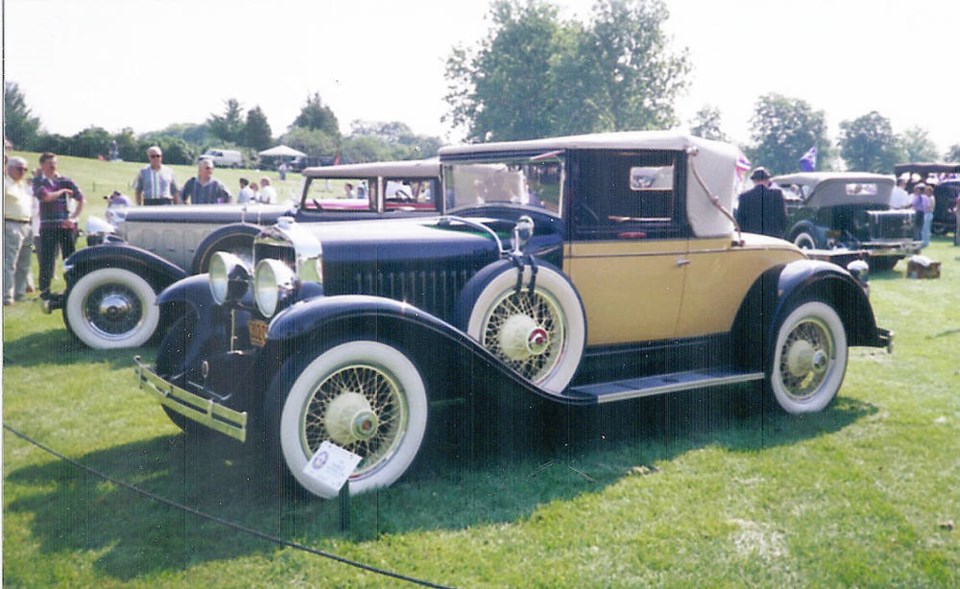By the mid-1920s, automotive engineering was well enough advanced and cars reliable enough that motorists were ready for more comfort, convenience and style.
Even the conservative Henry Ford recognized rather belatedly that the days of his sturdy but spare Model T were numbered. He discontinued it in 1927 and design began on its replacement, the more glamorous and faster Model A.
At General Motors, its brilliant president Alfred P. Sloan, Jr., was gradually evolving the annual-model-change philosophy. Encouraged by time-payment car loans, which had arrived in the late teens and were now established, motorists were becoming accustomed to trading their old models in for new ones. Sloan wanted to hurry the process along by making them dissatisfied with their current cars a little sooner.
What better way to entice them to trade up than to offer a new appearance in what became firmly established as the annual model change. Even though engineering may be only marginally improved, they could at least offer a fresh new look. This led to the formalization of automobile styling.
While all of this was evolving in Sloan’s mind, a young man named Harley Earl out in Hollywood, California, was working for local Cadillac distributor Don Lee. Earl had a natural artistic touch and Lee had him busily engaged in lengthening, lowering and rounding off the square corners of production cars. Their main clients were movie stars and other wealthy buyers who wanted something more distinctive than the boxy designs of the day.
During a business trip to Lee’s establishment on the West Coast, Cadillac general manager Lawrence Fisher was introduced to Earl’s work. Fisher wasn’t happy with Cadillac’s appearance, which he saw as somewhat stodgy. He liked what Earl was doing and upon returning east, he enthusiastically described young Earl’s handiwork to president Sloan.
The timing meshed perfectly with Sloan’s annual model-change-ideas discussion, and he decided to give Earl a try. He invited him to Detroit in 1926 on a contract to lead the styling of the new 1927 LaSalle, a “companion car” being developed by Cadillac to offer buyers some Cadillac prestige at a lower price. It would also fill in the price gap between Buick and regular Cadillacs.
The new LaSalle “junior Cadillac” was introduced in March 1927 and Earl’s styling was an immediate sensation. Using his imaginative Hollywood techniques, he had created a body with gently rounded curves, deeply drawn fenders and beautifully harmonized colours. The La Salle suddenly made other cars look old-fashioned.
To give the appearance of speed, Earl lowered the LaSalle’s silhouette, giving an overall impression of elegance never before seen in an American car. Earl had been deeply impressed by European cars and the fact he had borrowed heavily from the Spanish Hispano-Suiza’s styling either wasn’t noticed or was simply ignored.
With his contract at GM finished, Earl returned to California from his assignment. But armed with the new La Salle, it wasn’t long before Sloan sold his board of directors on the importance of styling.
Earl was invited back to Detroit on a permanent basis to head up a newly created Art and Colour Section of General Motors, reporting directly to Sloan. Styling was now no longer a sideline for the engineers, but was recognized as a significant enough element to be a separate entity.
The LaSalle vaulted Earl into prominence and under his influence, automobile styling advanced rapidly. The Art and Colour Section evolved and expanded to become the Styling Department. In 1940, Earl was made a General Motors vice-president, the first stylist to achieve this elevated status in the auto industry.
Harley Earl would set the styling mode for General Motors automobiles, and consequently the American industry, for three decades.
Although it was the LaSalle that gave him his start, Earl will be remembered more for the wraparound windshield, jet plane inspiration and most of all the tailfin craze that reached its zenith in the 1950s.
Tailfins came about because Earl was so captivated by the twin fuselages of the Lockheed P-38 fighter plane that he tried vestigial fins, little more than raised taillights, on the 1948 Cadillac. They took off and became an American styling icon for a decade.
The LaSalle would survive through the 1930s as a lower-priced Cadillac companion car. It had Cadillac quality and was powered by a V-8 engine, except from 1934 to ‘36, when cost considerations dictated the use of an Oldsmobile straight eight.
By 1940, GM deemed it unnecessary to continue the LaSalle. Buick had moved upscale, and that, combined with Cadillac’s lower-priced models, squeezed LaSalle out of the GM family.
Although it lasted for only 14 years, the LaSalle has secured its place in history as the car that, more than any other, formalized automobile styling.



